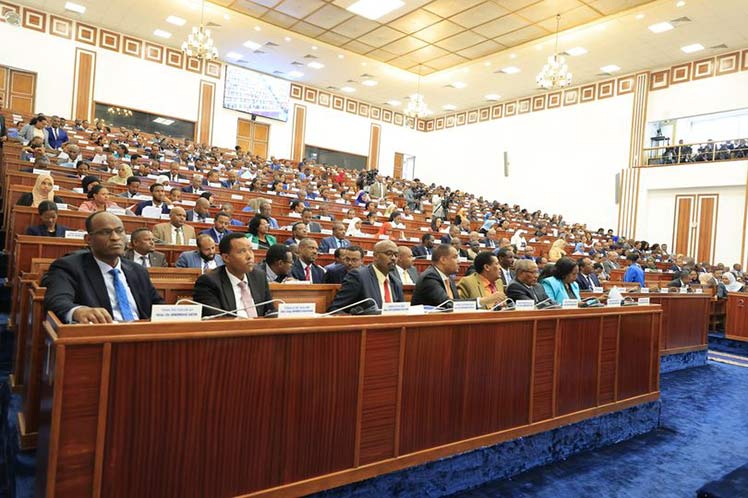Here in this post, we discussed the senate house of Ethiopia which is also known as the upper house and how the senate operated under different government.
THE UPPER HOUSE
The senate house of Ethiopia is the upper house of the Ethiopian parliament and they are responsible for the legislative, endorsing law and regulations.
HISTORY
The Senate, Yaheg Mawos sena Meker-beth, was established in 1931. Initially, its members were appointed, and they came from the nobility, the aristocracy, cabinet ministers, and civil servants. The chamber was reformed in the 1955 constitution so that the members were appointed by aristocrats.
Imperial Parliament of Ethiopia was first convened by Emperor Haile Selassie in 1931, although it was largely an advisory and feudal body, and was consolidated under the 1931 constitution. The bi-cameral, equal-numbered parliament consisted of the upper Senate (composed largely of nobility, the aristocracy, ministers, Distinguished Veterans and military commanders) and the lower Chamber of Deputies (constituting members chosen by the Emperor, the nobility and the aristocrats).
It was interrupted by the Italian invasion in 1936, and did not meet again until after 1941. By 1955, elders in the districts largely elected the landed aristocrats to the Senate.
Under the 1955 constitution
The 1955 constitution introduced new arrangements to the parliament, including the election of members to the Chamber of Deputies as well as the growth of the lower house to 250 members as opposed to the 125 members of the Senate by 1974. However, deputies largely consisted of feudal lords, rich merchants and high-level members of the civil service. Real power remained in the hands of the Emperor. The parliament would meet in five sessions from 1955 to 1974.
Under the Derg and PDRE
When the monarchy was overthrown, parliament was replaced with a transitional assembly of 60 select members from government institutions and provinces from 1974 to 1975, after which the government largely operated by decree through the military junta headed by Mengistu Haile Mariam. The period without some semblance of a legislature ended in 1987, when the People’s Democratic Republic of Ethiopia was established under a new constitution drafted by Mengistu and the Workers’ Party of Ethiopia (WPE).
The new Constitution established an 835-member legislature, the National Shengo (National Council), as the highest organ of state power. Its members were elected to five-year terms. Executive power was vested in a president, elected by the Shengo for a five-year term, and a cabinet also appointed by the Shengo. The president was chairman of the Council of State, which acted for the legislature between sessions. Actual power, however, rested in the WPE (and particularly with Mengistu), defined as the leading force of state and society. The National Shengo, while nominally vested with great lawmaking powers, actually did little more than rubber-stamp decisions made by Mengistu and the WPE.
Under the FDRE (FEDRAL DEMOCRATIC REPUBLIC OF ETHIOPIA)
Following Mengistu’s overthrow in 1991, the Shengo was abolished, and a period of transition lasted until 1995, when a new legislature was inaugurated under the new constitution.
The Constitution of the Federal Democratic Republic of Ethiopia also known as the 1995 Constitution of Ethiopia is the supreme law of Ethiopia. The constitution came into force on 21 August 1995 after it was drawn up by the Constituent Assembly that was elected in June 1994. It was adopted by the Transitional Government of Ethiopia on 8 December 1994 and came into force following the general election held in May–June 1995.


